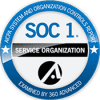Attention to data and analytics is rapidly proliferating across health care delivery services and population management systems. There is a thirst for more information, while many healthcare executives will simultaneously report that they are drowning in their current data and information.
Additionally, health systems including payers and providers have invested heavily in information technology tools, and are frustrated that they are not able to get to, or utilize the health information they have. There remains an uncertain pathway forward to track, analyze, report, and utilize existing health care data.
The use of health care data and analytics are challenged by both the volume and the strategy of what information to consider, how to use it, and how to know what it means. This is due in part to complex elements and interactions of service utilization; costs of care; differentiation of chronic and acute illnesses; identifying and recognizing undiagnosed health conditions; interactions between and the integration of physical and behavioral health conditions; health system and provider efficiencies and effectiveness; and, person-centered care, among others.
Provider systems and payers are willing to invest in health information data; technology; and analytics; if they can demonstrate, support, and provide effective population health outcomes.
The challenge in the design of health information data and analytics tools is to recognize what information has the greatest utility and provides useful roadmaps for care coordination strategies that support improved individual and population outcomes. Therefore, it is important to determine what the key drivers of poor health outcomes are, and what factors have the greatest impact on patient engagement and activation for improved health status. The benchmark for evaluating any health care data and analytics information tools should be their utility in identifying which populations have the greatest potential for health improvement, and their capacity for generating work flows that support patient engagement and activation through care coordination activities.
The key to addressing population health analytics is to recognize the important impact of the biological, behavioral, and social factors that influence health status and drive outcomes. Any tools that fail to recognize or account for these factors will necessarily fall short in their utility and effectiveness. InfoMC integrates with health data analytic tools designed to account for these fundamental elements of health care utilization and the identification of key individuals with a highest likelihood of improved health outcomes. These tools support the generation of care coordination workflows that target key factors in poor health status and care plans that improve outcomes.








